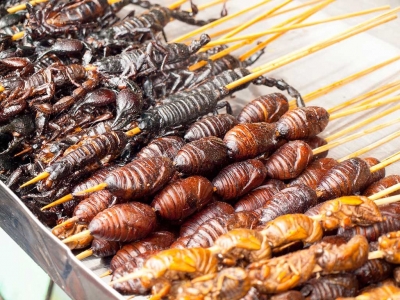ARE INSECTS RICH IN PROTEIN?

A study published in the European Journal of Clinical Nutrition shows that “insects contain values of between 9.96 and 35.2 grams of protein per 100 grams, compared with 16.8-20.6 grams for meat”. However, protein density does vary widely depending on which kinds of bugs are being consumed. With over 2,100 types of edible insects to choose from, the options are endless. Crickets, certain ant species, and mealworms are the rising stars of the bug protein movement, due mostly to their calorie and protein density.
Eating insects is a great alternative for those who are concerned with decreasing their environmental footprint. On average, the resources it takes to raise and produce bugs is significantly less than animal-based meat. According to the Food and Agriculture Organization, “crickets need six times less feed than cattle, four times less than sheep, and twice less than pigs and broiler chickens to produce the same amount of protein”. They also produce significantly less greenhouse gasses than animals and it takes less land to raise them.
As the human population increases and as we continue to observe the impacts of climate change, swapping your beef burger for a cricket-based burger might be one more way individuals can contribute to a more sustainable planet.
Credit : Runtastic
Picture Credit : Google